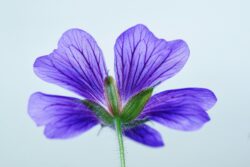The Gardener’s Guide to Effective Meditation

As any serious gardener can tell you, there are a lot of parallels between the principles of gardening and life in general. By getting your hands in that soil, cultivating and watching your garden grow, you recognize real life lessons: plan—but embrace the unexpected; nourish living things; be patient, watch, and allow each plant to be itself; work with nature; and weed out what doesn’t support growth.
Similarly, as sometime-gardeners and as women who have been practicing the Transcendental Meditation technique for decades, we recognized that these and other principles of gardening apply to effective meditation.
Outer depends on inner
Nutrition, fertilizer, and watering strengthen the inner plant, and enhance the soil, resulting in strong, radiant colors, fragrance, and exuberant growth.
Being is the foundation for all thought and action. The more inner Being is developed, the more powerful are thoughts and actions. So developing consciousness—the reservoir of intelligence, energy and creativity—leads to a greater expression of those qualities in daily life. Maharishi, the founder of the TM technique, says, “Attend to your own inner health and happiness. Happiness radiates like the fragrance from a flower and draws all good things towards you.”
Life is found in layers
Soil has layers and different nutrition may be available at different layers. The roots of the plant are constantly seeking the nutrients in deeper levels of earth. In a plant, there is the colorless sap at its essence—the pure potential of the plant that contains the blueprint for all of its development. The expressions of the sap are the stem, leaves, and flowers.
In the Transcendental Meditation technique, the mind transcends from more active layers of thought to subtler levels of thought and to pure unmanifest consciousness at the mind’s essence, characterized by more refined functioning of the brain and an infinite reservoir of creativity, energy, and intelligence.
Water the root to enjoy the fruit
One doesn’t water the branches or leaves or fruit. One must nourish the tree or plant at its root level. From there the whole structure is nourished. The stronger the root system, the stronger the plant.
Similarly, during the TM technique, one’s attention settles within to the foundation and source of thinking, the field of Being—silent consciousness, inner pure potentiality—drawing upon that deepest level of the mind before a period of activity so that there is an abundance of creativity to fulfill our goals.
Cooperation
In a garden and everywhere in nature, the plants, trees, grasses, bushes, insects, and all the animal world cooperate and create a symbiosis.
In the same way, the mind and body cooperate in TM—the mind settles, triggering a response in the body and then the body settles, providing deep relaxation. During the deep rest, the intelligence inherent in the body washes away stress and its accompanying symptoms that can otherwise result in disease.
Weed!
It’s necessary to remove weeds, especially deeply rooted weeds, from your garden because it allows healthy plants to grow and flourish.
During the TM technique, while the body enjoys profound rest, deeply rooted stresses are dissolved and imbalances are neutralized, allowing health and happiness to grow.
Alternation of rest and activity
In nature, there is a season of rest and a season of activity. Every gardener knows there is a time to plant and a time to harvest. For example, during winter months, perennial plants are dormant.
The development of consciousness is based on an alternation of rest and activity, both in the mind and the body. Therefore, TM is not a technique to be done for many hours every day. The unbounded silent awareness and deep rest experienced during the technique must be balanced with life’s regular activity, characterized by an increase of mental and physical dynamism. This alternation of deep rest during the TM practice and normal activity each day and evening has been found by millions of women to successfully establish the benefits of TM over time.
So learn the Transcendental Meditation technique and make it part of your daily routine in the same way that you schedule in your gardening time. Nurture yourself. And be sure to “take time to stop and smell the roses” between your meditation times each day.
Grow to your full potential. Contact a nearby TM teacher..
About the Author
Janet Hoffman is the executive director of TM for Women Professionals, a division of TM for Women in the USA
Vanessa Vidal is the national director of TM for Women in the USA





